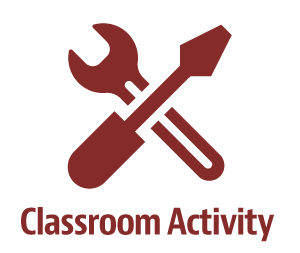
Know your team’s personality types
Getting people to function as a team while juggling various personalities can present a considerable challenge. Our personalities directly influence how we lead and how those we lead, will follow. In a more generic grouping, personalities may be identified as four basic personality types that include:
The ‘Steady Eddie’ type
This is the person who shows up every day and does the job. They perform at a high level and rely on careful analysis of the work and require a detailed plan to be the most successful. Watch when teaming with a ‘Happy-Go-Lucky’ or ‘Cooperative’ type. These may not be the best combinations because ‘Steady Eddie’ is not a decision-maker or risk-taker and a combination of these types will need a lot of direct supervision. Assign accurate, detailed, or high-quality work that is well laid out. Team up with a ‘Take-Charge’ type to maximize this worker’s capabilities.
The ‘Happy-Go-Lucky’ type
This worker is enthusiastic, friendly, perpetually optimistic and wants to be everyone’s friend. You can count on this person to motivate those around them just because they are enthusiastic about the work. They are good team builders and work at trying to reach consensus among the team when decisions must be made. Watch for mood swings. If things are not going as planned, they get down quickly and de-motivate others. If you have special teams or committees working on specific projects, this is your person. They value social interaction and are a positive addition to most crew combinations. Team with those who follow through with assignments and you will maximize this person’s capabilities.
The ‘Cooperative’ type
This worker focuses on getting the job done and cooperates with everyone. They perform at a steady consistent pace and will follow through to complete assignments. Watch for overextension of the team member by assigning too many tasks because they find it hard to say no to anyone. They also do not function well in a conflict environment. Team this worker with a ‘Take-Charge’ type and get out of the way!
The ‘Take-Charge’ type
This worker readily accepts challenges, authority, and welcomes responsibility. They are creative, solve problems, and make decisions. You can count on them when times are tough because they are work chargers. Provide challenging work and empower them to take the lead. Watch for them being too overbearing on others. This can lead to resentment and lost productivity. Be careful to support this crew member by giving them a lot of leeway but don’t allow them to take over your responsibilities. The ‘Take-Charge’ workers will be the informal leaders on their crews.
Combine the elements of work with the right team and you are well on your way to becoming an effective leader.
Exercise: Think about how your personality may influence other’s actions and reactions. What are general characteristics that help identify four general personality types and interact with each of them more successfully?
Safety on the jobsite:
What your people don’t know can hurt them and the company.
When you hold a safety meeting, you’re providing information to help your people make the right choices—the safe choices—that will save lives, time and money. But how do you find out what your people don’t know? Here, we’re talking about the unknowns—the hazards, risks, procedures, emergency plans, etc. your people should know about, but might not. These unknowns are hard to identify, they can show up without warning, and sometimes they’re hidden by the “big picture.” Take action to identify the hazards your people don’t know they don’t know.
Actively check your jobsites for brand-new hazards. On an ever-evolving jobsite, new hazards could include chemicals, equipment, location or geography hazards, or risks created by other contractors. When you find these (previously unknown) hazards, explain how to control them to your crew.
Train on safety whenever you can. Talking about safety with your people will provide two benefits. One, over time, your people will realize you really value and care about safety. They’ll be more likely to follow safety rules and work safely when they know safety is a company value. Two, you’ll have more opportunities to identify the unknowns, especially when you’re talking with someone one-on-one.
What about common sense? You can’t rely on common sense to keep your people safe. The safety knowledge some people call common sense is only “common” to those who have the same backgrounds, experiences and values. Construction sites have lots of people from very different backgrounds. Common safety knowledge to you may have never occurred to someone else. To make matters worse, common safety ideas can become routine, ordinary and almost invisible. Common ideas fade into the background and since we aren’t paying attention to them, those ideas lose their power to motivate us to act. So, call attention to the common hazards like the slippery wet floor, but be careful not to become a broken record. Stay fresh. Bring up a different “common-sense” situation each day or each week. Inspire your crew to be mindful of everything they do—even the common stuff—and they’ll be more likely to notice the common hazards and prevent the common accidents.
By definition, it’s impossible to know all the unknowns, but identifying some of them reduces the likelihood someone on your crew or on your site gets injured.

Math in the field: Convert Labor Dollar Budget
Use the following information to answer the questions.
Given: A forming crew is made up of:
1 foreman @ $30.00 per hour
2 carpenters @ $24.00 per hour
2 ironworkers @$23.00 per hour
2 apprentices @ $18.00 per hour
2 laborers @ $16.00 per hour
Labor budget is $48,000.00
Determine the crew cost per hour.
$30.00 + $48.00 + $46.00 + 36.00 + $32.00 = $192.00
Determine the average crew cost per labor hour.
Total per hour crew cost ($192.00)
Number in crew (9) = $21.34 average crew member cost per hour. ($192.00/9)
Determine the budgeted crew hours.
Total budget ($48,000.00)
Crew cost ($192.00) = 250 crew hours. ($48,000/$192)
Determine the budgeted labor hours.
Total Budget ($48,000.00)
Average crew member cost per hour ($21.34) = 2249.30 labor hours to perform the work. ($48,000/$21.34)
